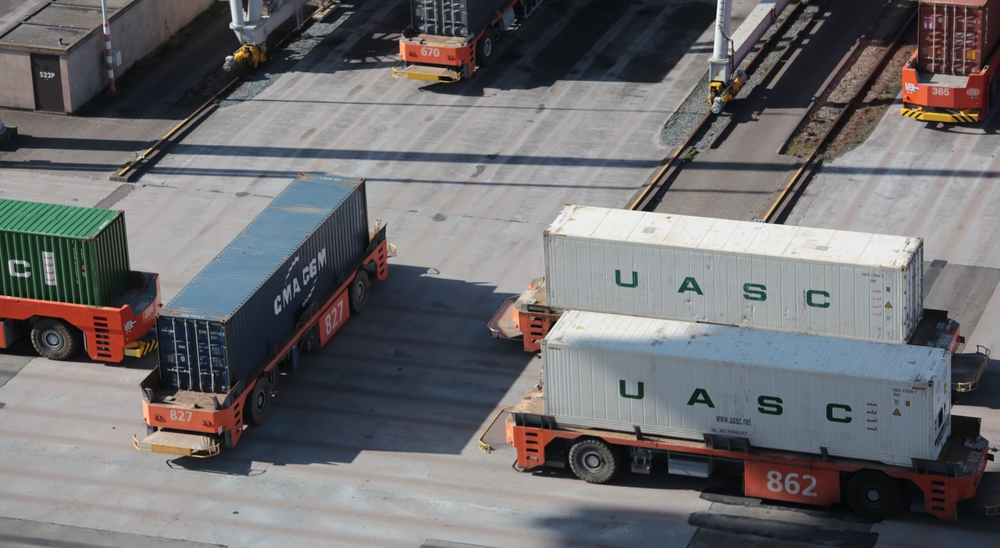How self-driving trucks will change our transportation system

Some say driverless trucks might start pulling up next to you at a red light in a decade. Trucks without drivers could change our transport system and reduce costs, but it might also increase road transport volumes and its negative effects. Researcher Albin Engholm aims to understand the implications of this new technology.
Today, we’re reliant on truck drivers, not only to drive the trucks, but often also to make sure the goods are picked up and delivered in a timely and responsible way. But what if we had trucks that drive themselves?
“Driverless trucks would change a lot of things. Our research is trying to understand what this could mean for the transport system in the long run”, says Albin Engholm, PhD student at ITRL. “By using a freight transport model, we looked at what happens when this technology is in place and its long term effects. We have also done research on the current situation for the actors developing this technology and the uncertainties and challenges they are facing right now.
The researchers have to make many assumptions to make such an analysis since the technology is not really “there” yet. But one of the most apparent effects of driverless trucks is the possibility to significantly reduce the operating cost for driving the trucks – without the driver, you could possibly eliminate a large share of labour costs, Albin explains.

“Labour is the biggest cost component for owning and operating trucks, making it a compelling business case for automation. In particular this could be feasible for transport tasks in certain traffic environments, such as highways, where the driving environment is relatively simple and the technical barriers for automated driving are relatively low.”
In Albin’s licentiate thesis, which estimates the effects of a hypothetical large-scale introduction of driverless trucks in the current Swedish freight transport system, found that it's achievable to reduce freight transport costs with 10-20 billion SEK every year. However, driverless trucks might also be a complement to balance out the current shortage of drivers.
“It is challenging to recruit truck drivers. There’s a generation shift making it difficult to recruit younger drivers and other studies have forecasted that this problem will get more severe over time. A gradual introduction of driverless trucks could then mitigate some of that shortage. But of course, a rapid transition of driverless trucks could not just reduce the number of future jobs but also offset some of the existing labor”, Albin says.
While the need for long haulage drivers will likely decrease, the technology will create new jobs within other parts of the freight transport industry. Jobs for supporting the driverless trucks’ operations, such as loading and unloading, remote operators, maintenance, and first and last mile delivery. Albin is cautious about whether that will compensate for the shift from driver jobs.
Making increased road transport sustainable
As driverless trucks could make road transport cheaper, Albin and his colleagues predict a substantial modal shift from rail and sea to road transport. An introduction of driverless trucks may increase the total ton-kilometres performed by road transport by more than 20%, and the vehicle kilometres would increase even more, by around 35%. That is, it may increase the goods volumes transported by trucks, but even more the amount of truck traffic on the roads. This is something working against the current climate strategy.
“How will this affect our goal to reach the climate target? One part of the current strategy is to shift transport from road to rail and sea, but this technology could provide a strong economic incentive for the opposite. How do we manage that?”
One solution for reducing emissions could be electrification. If the trucks were carbon-neutral, the increased traffic would have less of an impact on the environment. However, the increased truck traffic will still have other negative effects. Albin comments that it’s a challenge to make studies that can account for all of this development. Some studies look at job effects, some at the environmental impact. We need to have a more integrated assessment where we look, for instance, at the Swedish system and make a full assessment of all of these effects and on the combination of technological developments, not just within automation, but also electrification, digitalization and so on. And we need to hurry. Driverless trucks could be a reality within a few years.
“By the end of this decade, it is quite possible that we could see driverless trucks implemented for some long-haulage applications and probably also within some terminals, harbours and industrial sites. Even if the technological development would enable trucks that are capable of automated driving everywhere, it would probably not make sense, practically, to use driverless trucks for all types of transport."
Albin continues to explain that it's also important to remember that the potential introduction of driverless trucks is not only a question of the technological development of automated driving systems. Legislation needs to be adapted, there must be a clear business value for the involved stakeholders, operational issues need to be overcome and there may be a need for adjustments in the infrastructure.
"But most importantly, I think planners, policymakers and other societal stakeholders should take an active position in thinking about how this technology, with its potential benefits and drawbacks can be used to create a more sustainable transport system”, Albin concludes.

